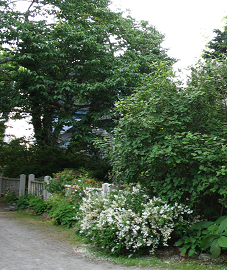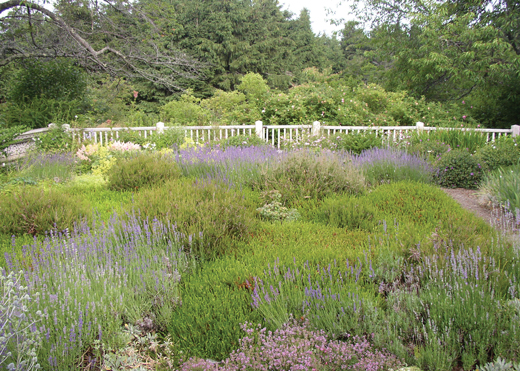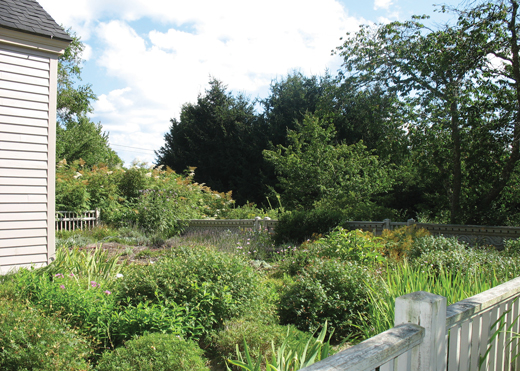New Life for Farrand’s Last Garden / Garland Farm, Bar Harbor, Maine (2008)
Garland Farm, Bar Harbor, Maine

“Normally designs get grander and grander at the end of a designer’s life, but Beatrix Farrand did the opposite at Garland Farm,” says Patrick Chassé, a landscape architect and board member of the Beatrix Farrand Society.
The society manages the property in Bar Harbor, Maine, where Farrand (1872–1959), one of the country’s first female landscape architects (she called herself a landscape gardener), spent her last years. Chassé describes the rear garden here, which Farrand viewed from her windows, as “amazingly intimate—it could fit within scale of suburban lot, yet it’s quite sophisticated and complex, botanically and horticulturally.”
BFS president and co-founder Jim Fuchs says that since purchasing the site in 2004, the society has begun renovating some buildings and commissioned Pressley Associates, Inc., to create a cultural landscape report (completed in 2007) and a master landscape treatment plan, now in preparation.

“This season we’re deconstructing the garden, removing non-original materials from other areas, and planning a possible reinstallation in spring of ’09,” says Chassé.
Eventually, the compound will be an education center for landscape design and horticulture. Before moving to Garland Farm in the late 1950s, Farrand operated a similar but larger center at her Reef Point estate in Bar Harbor. No paid staff members have yet been hired, but a small office occupies Farrand’s former quarters attached to the cape-style farmhouse, c. 1800, where architect Robert Patterson designed a new wing for her and a companion, Clementine Walter. “We’re converting Mrs. Farrand’s bedroom–sitting room into a library,” says Fuchs. “We already have two thousand volumes.”

The books are being classified, and the society also is setting up a documents archive. Garland Farm hosts group tours (scheduled in advance), and the former barn, now converted into an education center, hosts summer lecture series. (See related article on Farrand’s work at Dumbarton Oaks. Related LALH book: A Genius for Place: American Landscapes of the Country Place Era.)
—Jane Roy Brown